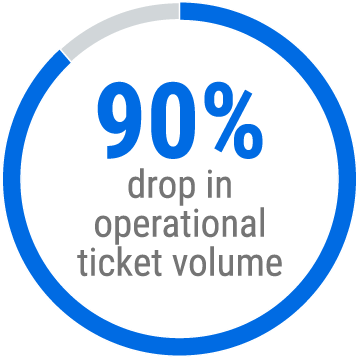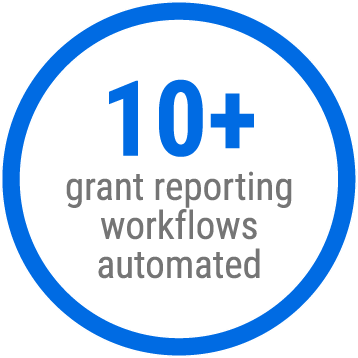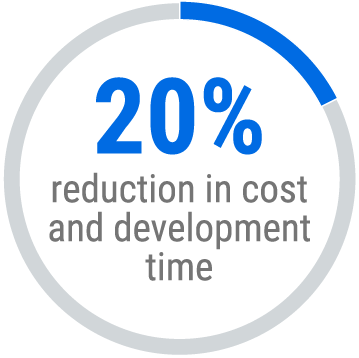Background
A prominent federal agency focuses on expanding healthcare access to underserved communities, including rural areas, low income families, and people without health insurance. The agency aims to remove inequities in healthcare by ensuring essential medical services reach even the most remote areas.
Within this agency, a specific office holds a mandate to improve healthcare for rural residents. Rather than just aiming for parity, this office actively empowers rural communities. It provides financial support to healthcare providers in these regions, crafts policies that raise healthcare quality, and shares proven methods to improve medical services. Through its work, this office ensures that everyone has equitable access to care regardless of location.
To manage complex operational needs, the office relies on a performance measurement system to streamline operations, tracking and analyzing the effectiveness of awarded grant programs. The system gathers and evaluates summary data from service providers and their clients, sourced from electronic health systems, to assess grant use and impact.
Challenge
Several limitations plagued the legacy performance measurement system. Its inconsistent and unintuitive user interface (UI) forced users to navigate cumbersome forms with over 200 data fields. This complexity induced anxiety, especially among those unfamiliar with technology.

Reliance on legacy technology made the system slow to adapt to change. Even minor updates drained substantial resources. High annual maintenance costs came with the custom developed nature of the software, and users often had to consult either the REI Systems team or an Operations and Maintenance (O&M) vendor for basic tasks.
These technical and usability challenges made modernization essential.
Solutions
Recognizing the limitations of the legacy platform, the agency’s Office of Information Technology (OIT) initiated and led the modernization of the performance measurement system. Their goal was not only to upgrade the technology but also to reimagine how organizations report grant performance, emphasizing usability, scalability, and selfservice. The partner team, including REI Systems, collaborated closely with OIT to bring this vision to life.

Another key goal was to make the UI consistent. This simplifies the process and makes the system easier to use. A uniform design helps users who participate in multiple programs by making forms easier to understand and complete.
Salesforce is the cornerstone of this transformative project, marking a notable shift from REI’s usual custom-coded solutions to new low-code approaches. This enables quicker feature rollouts and better adaptability to emerging needs. This change also signifies a milestone in REI’s long-standing partnership with the federal agency.
The Salesforce-based system enhances user experience with a consistent and intuitive UI, simplifying reporting and navigation across systems. Initially supporting three programs, it’s scalable to accommodate over 15 additional ones. In its second phase, the system’s user base expanded to over 2,000 external and 40 internal users, significantly increasing from 400 and 20 users in its first phase.
Federal agency decision-makers now have access to real-time analytics through customizable, interactive dashboards, enabling data-driven policy decisions with clear, easily understandable insights. Enhanced security and simplified access via Login.gov ensure the system is both secure and user friendly.
Salesforce was chosen for its : it lets users handle tasks without IT help, boosting productivity; its uniform interface design eases adaptation; and its low-code architecture supports quick, affordable updates and future adaptability to policy changes.
The development used Agile principles, evolving through insights from a pilot program. Custom features were added only when they provided clear business value.
The REI team introduced several innovations, including single sign-on access via Login.gov and a 360-degree view of each grantee’s activity. Live, interactive dashboards offer real-time performance tracking, which helps decision-making.
Risk management was a cornerstone of the project. The team maintained up-to-date risk logs and held daily and weekly meetings to anticipate and prepare for unexpected challenges. This proactive approach bolstered client confidence and laid the groundwork for future successes.
Overcoming Obstacles
Working with low-code platforms like Salesforce or Appian requires choosing between customization and built-in features. The team clearly communicated the risks of deviating from default settings to the client and documented all customization decisions, highlighting the potential for long-term technical debt.
Our initial challenge was that this office found Salesforce’s UI too basic for its unique needs. In response, the REI team balanced the benefits of the default setup with the customer’s need for customization, considering long-term costs and potential technical debt.

The guiding principle was to keep the client on the platform’s default settings to reduce complexity and ease future upkeep. We only deviated from this when the case for customization was strong, ensuring the advantages outweighed both short- and long-term costs.
Anticipated Impact
The modernization initiative successfully implemented performance reporting and administrative modules across 21 programs, transforming how the agency and its grantees manage and measure program performance. The shift from a legacy system to a Salesforce-based platform improved scalability, usability, and operational efficiency across the board.
The new platform significantly reduced the cost and development time for programs by more than 20%, allowing the agency to onboard more initiatives quickly and efficiently. As adoption expanded, the system scaled from 400 external and 20 internal users in Phase 1 to more than 2,000 external and 40 internal users in Phase 2, demonstrating strong user trust and demand.



A key innovation was the introduction of a self-service model, which empowered users to perform routine tasks independently. This shift eliminated the need for help desk support for day-to-day activities, resulting in a 90% drop in operational ticket volume. For example, deliverable creation time was reduced from 6 hours to just 30 minutes—a 90% time savings that allows staff to focus more on program impact than administrative tasks.
The Salesforce platform automated more than 10 grant reporting workflows, reducing manual processes and the risk of user error. The implementation of interactive dashboards gives decision-makers real-time insight into program effectiveness, enabling proactive adjustments and data-driven decisions.
User feedback has been overwhelmingly positive: 95% of external users reported reduced anxiety and greater confidence when entering data, thanks to intuitive navigation and consistent interface design. Additionally, over 80% of users completed onboarding and training within two weeks, reflecting ease of use and a well-orchestrated change management strategy.
The system also achieved 99.9% uptime post-launch, reinforcing its reliability for mission-critical operations. More than 1 million data points have been processed through the platform, highlighting its performance capacity and scalability.
System integration with related platforms enables seamless, real-time data flow, while the inclusion of a centralized knowledge repository has replaced the need for tools like SharePoint and Confluence -streamlining access to training, templates, and policy guidance within the same interface.
While artificial intelligence (AI) capabilities such as chatbots are not yet implemented, the platform provides a solid foundation for future enhancements.
Results
This collaboration between REI and the federal agency replaced an outdated system with an innovative Salesforce-based solution. Far more than just a user-friendly interface, this platform improves efficiency while unlocking analytical tools and providing the scalability for evolving challenges.
Results show the new system, which was implemented last year, is already saving time and money, making a quick and positive difference in operations.
The new platform speeds up the release of new features and makes updates easier while lowering yearly maintenance costs and reducing the need for manual testing and old systems. For users, the platform makes it easy to access past records, improving how data is tracked. It also simplifies reporting and data sharing, making it less stressful to enter information.
With a centralized knowledge repository built directly into the platform, users no longer need to rely on external systems. Customized reporting is possible through integrated OmniScripts, making the system more flexible for specific needs.
Overall, the new platform not only overcomes the limitations of the previous performance measurement system but also delivers a markedly improved user experience, operational efficiency, and long-term cost-effectiveness.
Copyright © 2025 REI Systems. All rights reserved.






